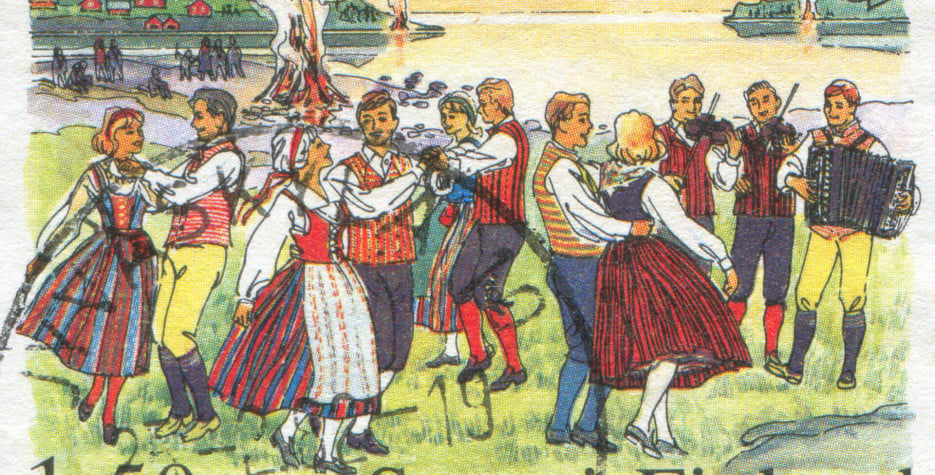When is Midsummer in Finland?
This Finnish holiday (Juhannuspäivä) is celebrated each year on the Saturday falling between June 20th - 26th. The actual date of Midsummer's day may vary between the June 20th - 21st.
Traditions of Midsummer in Finland
It has become one of the most important holidays in Finland, not surprising as its northern location means this is a time of year when the sun hardly sets. Festivities start on the Friday before, known as Midsummer's Eve (Midsommarafton).
Similar to New Year's celebration, the main celebrations take place on the eve of the day. Traditional events include raising and dancing around a huge maypole. Many people will wear traditional folk costumes and listen to traditional music. It is also a holiday on which the Finns will consume a large amount of alcohol and raucous drinking songs are a common sound during the celebrations.
Midsummer was considered to be one of the key times in the year when the power of magic was strongest and at it was thought to be a good time to perform rituals, particularly those which related to predicting the future. A tradition of this is one in which young people pick bouquets of seven or nine different flowers and put them under their pillow in the hope of dreaming about their future spouse.
Even though the major fertility rites in ancient times, centre around the beginning of spring, Midsummer was linked to an ancient fertility festival, as conception at this time would lead to a birth in March, which was traditionally seen as a good time for children to be born.
In Finland, the summer solstice was originally known as "Ukon Juhla", after the Finnish sky god Ukko. This tradition was replaced when Christianity was adopted, with the festival becoming "Juhannus", in honour of John the Baptist whose feast day was close enough to Midsummer to make it a suitable replacement.
St. John's Day
In Christianity, Midsummer Day is associated with the nativity of John the Baptist, which is observed on the same day, June 24th, in the Catholic, Orthodox and some Protestant churches.


